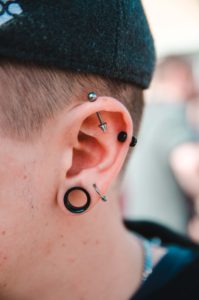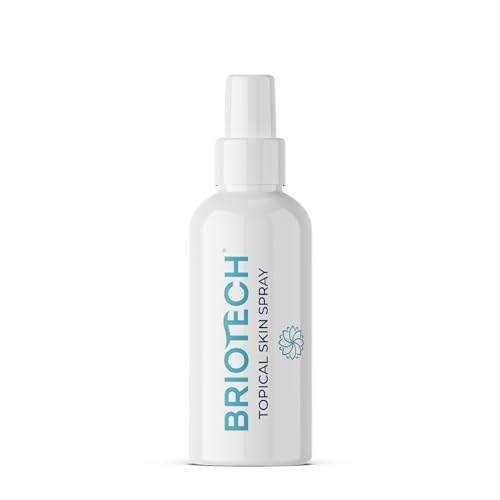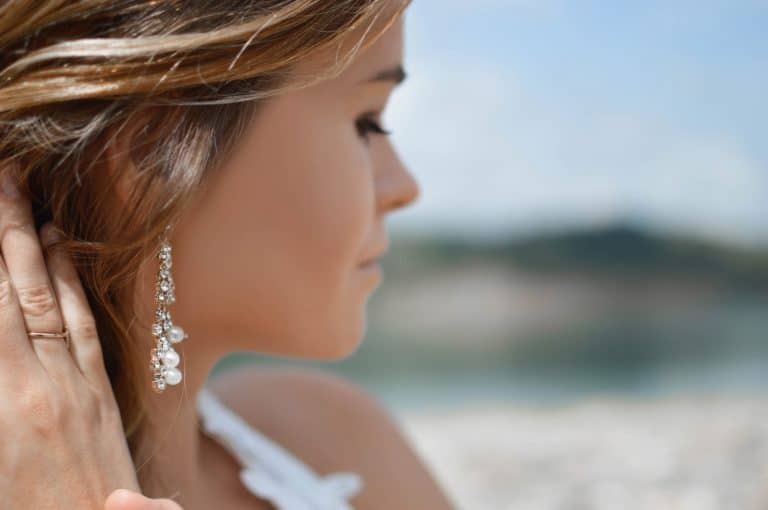Ear piercings are one of the most interesting ways of achieving an accessorized look, but at the same time, the pain caused by ear piercings can be very daunting. You will experience a moderate amount of pain while getting your ears pierced. But this depends on many factors, especially on the type of ear piercing you’re getting. Ears give you many different placement options you can get pierced and look stunning.
There are many factors you need to consider when it comes to ear piercing as you want to get the right placement and go through a smooth process. If it’s your first time getting a unique ear piercing and learning more about the pain behind ear piercings, you must read this article further below. This article is the perfect ear pain piercing guide and may compel you to get one instantly. So don’t miss out on the interesting details mentioned below.
How Bad Do Ear Piercings Hurt?
One of the most common questions asked that plays on everyone’s mind before getting an ear piercing are how bad ear piercings really hurt. Well, for some people, pain such as this is indescribable as it varies from person to person. It’s not like you don’t feel pain at all; the pain depends on how smoothly the piercers pierces your ear with a needle. Piercing with a needle is much less painful than using a gunshot.
You will feel a considerate amount of pain or sensation, but only for a few seconds. The best way to make those few seconds a bit more bearable is by distracting yourself with music or by talking to 
However, it’s easier said than done. But, the fact that you’re achieving something unique and trendy after those few painful seconds is more than enough for you to bear that pain. As they say, ‘no pain, no gain.’
Your ear piercing pain intensity will vary depending on the type of ear piercing you’re getting. The ear offers you different placements where you can get your piercing. Some are painful, while some barely cause any pain. The areas with more flesh, such as the lower ear lobe, aren’t painful at all compared to other placements such as the cartilage.
Do Piercings Hurt Worse than a Shot?
Ear piercings aren’t that painful as you think they are; in fact, they definitely hurt less than a shot. If you’re able to go through a shot, then you can surely get through the ear piercing process. Now that you can compare ear piercing pain to something that everyone has gone through, you can surely clear your mind. It will help get rid of the stress gobbled up regarding the pain and get those beautiful ears pierced.
What is the Most Painful Piercing to Get on Your Ear?
As mentioned earlier, you can get your ear pierced in different areas of the ear. The piercing placements fall into three categories; the lobe, outer ear, and inner ear. Lobe piercings are the most painless places to get your ears pierced. You can get a lobe piercing on the lower lobe, also known as the standard lobe piercing, and the transverse lobe. Outer ear piercings are the most painful places to get your ears pierced and require courage and stamina. That said, you achieve a stylish look with these types of piercings.
Outer ear piercings consist of the forward helix, auricle, industrial, tragus, and the sung. Tragus and sung piercings are the most painful piercings compared to the others. The inner ear comprises the helix piercing, rook, outer conch, daith, anti-tragus, and orbital piercing. Among all of them, the helix is the least painful place. Inner and outer ear piercings tend to hurt more as these areas contain hard tissues.
Sometimes the pain can be quite controllable, while at times, it can get difficult to bear, especially when it comes to cartridge piercings. The expertise of the piercer plays a major role in the amount of pain you feel. If the piercer uses the right technique, you will barely feel any pain.
Remember that you might not instantly feel pain with cartilage piercings, but you may experience it sometimes after your first piercing. This is because the area you’ve pierced is highly inflamed and doesn’t have much blood flow; hence it takes almost a month to heal. During the healing process, you will experience slight pain, which is a good sign.
Do They Numb Your Ear before Piercing?
As the process of piercing has greatly evolved, piercers use advanced instruments that don’t cause too much pain as it used to before. Hence, in many situations, you don’t really require numbing. That said, numbing creams are one of the best ways to numb your ear and tolerate that pain through piercings. Piercers are likely to use these creams when dealing with kids getting their ears pierced for the first time. These numbing creams contain a lidocaine derivative that acts as local anesthesia. If you’re not a kid, you don’t need to worry about getting your ear numbed. Ear piercings are quite bearable; all you need is a few seconds of distractions, and you’ve got that perfect diamond studded look.








How Can I Make My Ear Piercing Hurt Less?
There’s not much you can do to eradicate the pain completely. Pain is a part of the piercing process, and it is what makes your experience more memorable and something you can never forget. There are a few things you can do that may help you to handle the pain better. Always eat a proper meal before you go for your piercing as you don’t want to end up fainting during your piercing. It’s common to get that weird tingly feeling in your stomach and stress out before your piercing. This is one of the reasons why you must always go will a full stomach so that you’re active and fresh.
The other thing you can do is practice good breathing exercises. Breathing is important during the piercing procedure, as this will help you handle the pain much better. If you want to experience lesser pain, refrain from gobbling down pain killers before the appointment. Otherwise, this will make your blood thin and cause more pain than you would already experience. You must avoid getting a piercing during your menstrual cycle, as it will make it harder for you to bear the pain. Plus, it’s best not to exert yourself during this stage.
Is The Pain Better With a Needle or Gun?
Piercers carry our ear piercings with both a needle and a piercing gun. When it comes to less painful machinery, needles are definitely the best option. Needles come with low impact pain as the 
Piercing guns cause a higher impact of pain, and the piercing procedure is much intense as it gushes through your skin. This may also cause a slight tissue injury, which you might come to know of a few days after your piercing if the pain persists. You can’t sterilize a piercing gun; hence there is a lot of gunk that accumulates in the butterfly-shaped area of the gun. This makes you more prone to developing a skin infection. So if you want to use a safer method that contributes to less pain, the needle is the perfect method for your ear piercing.
How’s the Pain after Getting Your Ear Pierced?
Right after you get your ear piercing, you will feel a slight heaviness and warmth in your ear after the stress relief. But, ear piercings shouldn’t really hurt after you’ve got them. You should or will experience no extreme pain after your piercing procedure, especially if you follow the aftercare instructions provided by your piercer. If you notice swelling or redness in your ear, you must instantly seek medical help and call your piercing station, as this is a bad sign of an infection.
One of the main causes for this is poor sterilization of machinery or a metal allergy, which is quite common. Redness and swelling must not happen after your piercing; if it occurs, you must immediately do something about it. The pain sometimes persists longer, especially after you’ve got a cartilage piercing, but if it stays over 24 hours, you need to seek medical help without wasting any time. This is one of the reasons why you should be extremely cautious when choosing where to get your piercing done.
How Can You Help the Pain When Sleeping?
The best thing you can do to relieve piercing pain instantly while sleeping is by using a warm compress. A warm compress will help cure any infection if there and simmer down the pain and swelling in your ears. What you can also do is sleep on your back instead of sleeping sideways. By sleeping on your back, your pillow won’t make any contact with your ears by pressing; hence, this will help avoid any pain experienced at night. This will be a bit tough for side-sleepers, but you can get flat studs pierced instead of the ones with jagged edges. Flat studs contribute to less pain and disruption while sleeping.
How do you Deal with an Infected Ear Piercing?
Ear piercing infections are quite common, especially if you don’t use well-sterilized machinery and jewelry. If you notice any sign of infection such as redness and swelling, you must immediately use the proper aftercare products that your piercers have advised you to use. The best aftercare products are those that contain a sterile solution. So keep applying it and don’t remove your piercing as that will just make the infection worse. Keep gently cleaning the area twice a day using cotton and also use clean pillowcases and towels so that there is no spread of infection. If you notice that the infection gets worse after a few days, you must immediately consult your doctor.
How long does the Healing Process Take?
The healing process of your ear piercing depends on the type of ear piercing you get. The initial ear lobe healing takes around a minimum of 4 weeks and a maximum of 6 weeks. Cartilage piercing carried out on the tragus helix and daith takes a longer time to heal, which is around 12 weeks. However, the healing process differs for everyone, and sometimes cartilage healing can take up to six months.
If you want the healing process to function faster, you must avoid taking out your piercing. This will only delay the healing process and might cause you to develop a piercing infection as well. If you want an accurate healing time, it’s best to ask your piercer, as they will be the best person to guide you on the exact time it will take your piercing to heal.
Conclusion
Ear piercings have got to be one of the best experiences you will go through. And no matter how frightened you are of the pain at this time, you will achieve the best-accessorized look that will add to your natural beauty. The few seconds of pain caused during the ear piercing process are totally worth the after results. After wearing that classy look, you will, for sure, question yourself on why you were over thinking about getting a piercing so much.
With the help of this ear piercing pain guide, you can easily conquer all your fears regarding the pain associated with ear piercings. If you face any issues, you can always come back here and solve your ear piercing issue. So it’s time that you finally get those ears pierced with the most beautiful studs.

